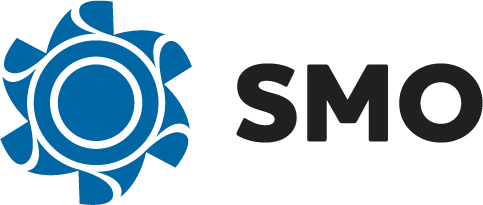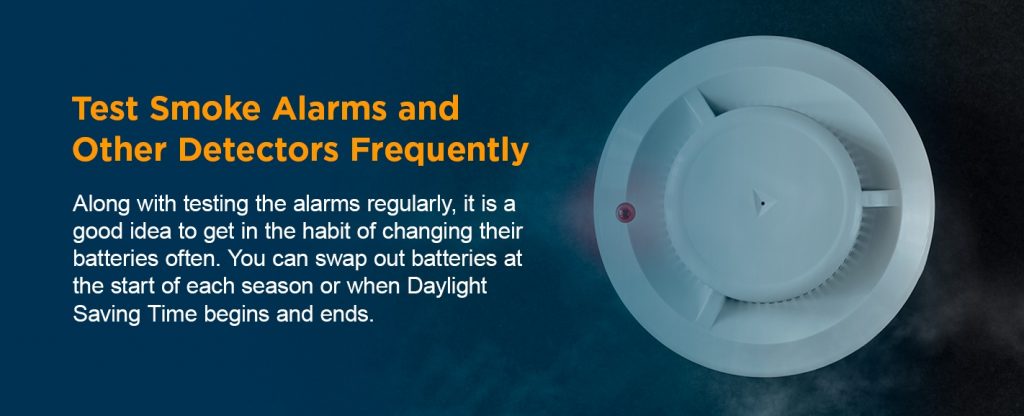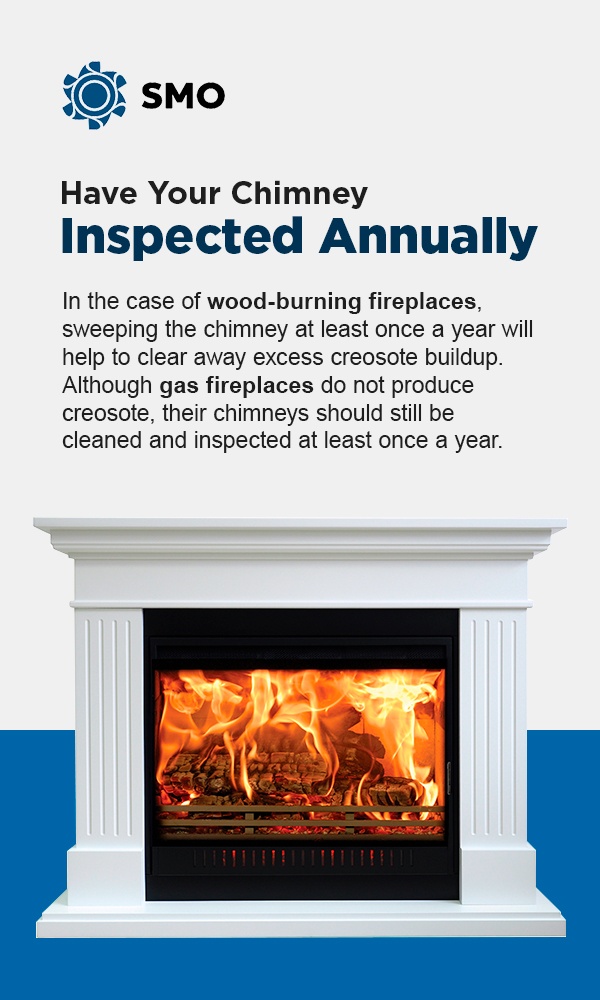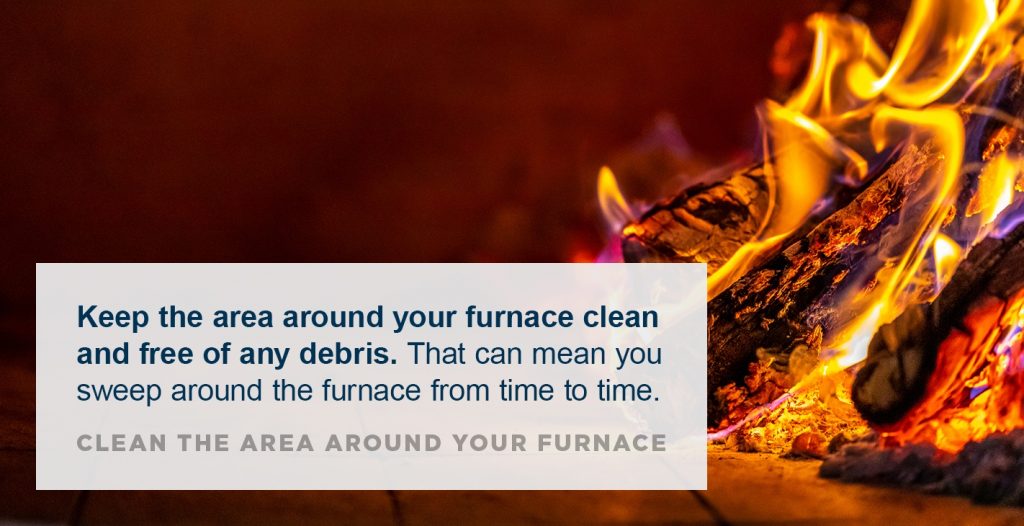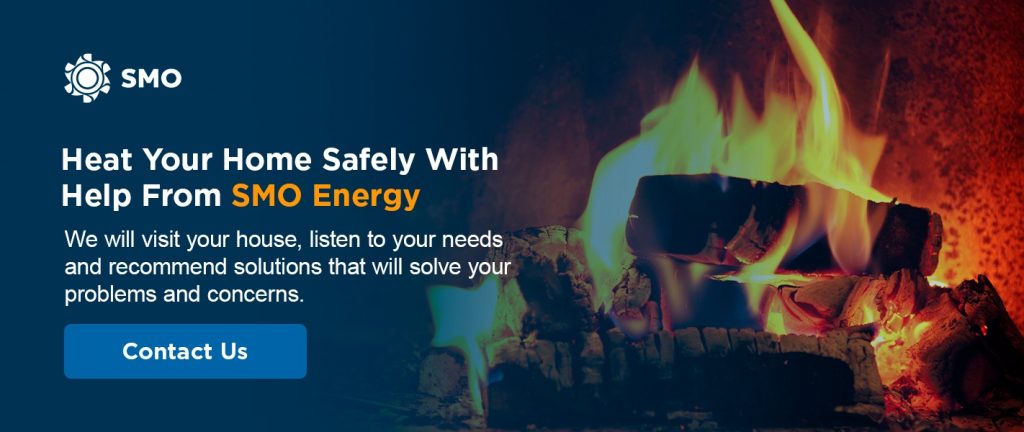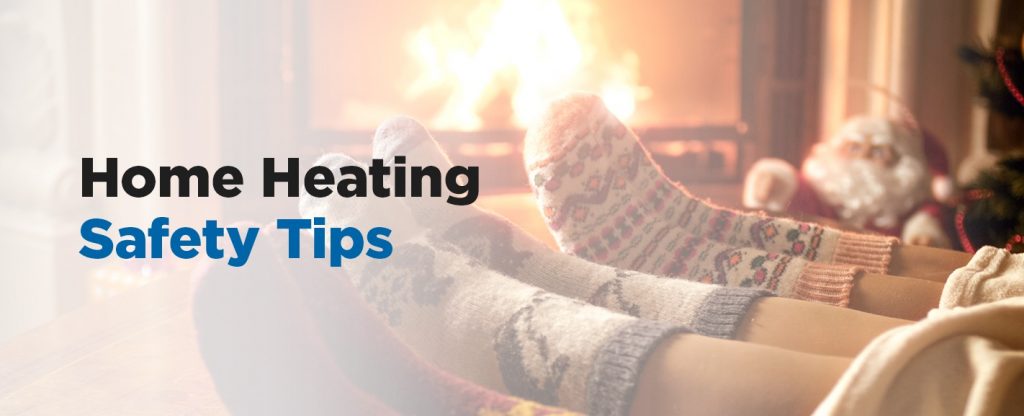
 Heaters and fireplaces keep you cozy and warm on the chilliest of days and nights. They can also help to protect your home’s systems, such as its plumbing, from damage caused by cold temperatures. Taking good care of your heating system or fireplace and following furnace and fireplace safety guidelines are two things you can do to ensure your heating system works for as long as it can and to reduce the risk of fire or other damage.
Heaters and fireplaces keep you cozy and warm on the chilliest of days and nights. They can also help to protect your home’s systems, such as its plumbing, from damage caused by cold temperatures. Taking good care of your heating system or fireplace and following furnace and fireplace safety guidelines are two things you can do to ensure your heating system works for as long as it can and to reduce the risk of fire or other damage.
Around 15% of all home fires can be traced back to heating equipment. Protect your household throughout the colder part of the year by following these fire safety tips for your home. Whether you have a furnace, a fireplace or both, heating your home safely is simple.
General Safety Tips to Follow
Modern furnaces and gas fireplaces often have built-in safety features, designed to reduce the risk of fire and burns. For example, furnaces usually have limit switches, which turn off the system if the temperature gets too high. Gas fireplaces usually have screens installed at the front to keep people from burning themselves or reaching into the flames. However, even with the presence of safety features, it is still important to practice good common sense and to play it safe when using the furnace or fireplace in your home.
Follow the 3-Foot Rule
If you have a gas or wood-burning fireplace at home, keep flammable objects at least 3 feet away from it. For example, do not hang long curtains so that they fall to the floor directly next to the fireplace. Keep upholstered chairs at least a yard away. To reduce the chance that others living in your home or visitors to your home will get too close to the fireplace, use tape or another type of marker to measure 3 feet out from the fireplace.
It is also important to keep objects at least 3 feet away from your furnace. If your furnace is in the basement and you also use the area for laundry or storage, make sure that no boxes or drying racks are nearby. Use tape to make the outline of a box around the furnace, placing the tape at least three feet away.
In addition to arranging objects and furniture so that they are not too close to your fireplace or furnace, teach your children and other household members not to get too close.
Schedule Routine Heating Equipment Maintenance
An annual tune-up and inspection of your HVAC equipment and fireplace can go a long way when it comes to increasing the safety of your home. Regular maintenance allows you to detect potential problems with your equipment early on before they have a chance to progress and develop into significant safety concerns. An annual inspection also typically includes a cleaning of the equipment. Keeping your fireplace and furnace clean reduces build-up, lowering the risk of fires.
There are additional benefits to routine heating equipment maintenance, beyond safety. Annual tune-ups help to improve the efficiency of your equipment so that it uses less energy and saves you money. Regular maintenance can also prolong the life of your heating system or fireplace, allowing you to get the most out of it before it is time for a replacement.
Do Not Leave Heating Equipment Unattended
While it is safe to leave your home while your furnace is operating, it is best only to use other types of heating equipment when you are in the same room. For example, only turn on your gas fireplace when you are in the room it is located in, or when another adult is present. While the risk is relatively small, there is a chance that the flames will escape and cause a fire. If you have small children or pets, there is the chance that they could stick their hands or paws in the fire.
If you are in the same room, you can move quickly to solve the problem or to get children or pets away from the flames.
Space heaters are another example of heating equipment that should only be used when an adult is in the same room. There is a chance that the space heater will tip over or otherwise cause a fire. When you are right there, you can move quickly to reduce the risk of fire. 
Test Smoke Alarms and Other Detectors Frequently
A smoke alarm can save your life and the lives of the people you live with. The smoke detectors you install in your home are on alert 24 hours a day, seven days a week. They are loud enough to wake up most people from sleep and can be heard over the radio, TV or other noise.
To get the most out of your home’s smoke alarms, be sure to install them in the proper locations. Every floor in your home should have at least one smoke alarm. Each bedroom should have its own smoke alarm, and there should be smoke alarms installed outside of sleeping areas.
A smoke alarm is only as good as its battery or power supply, though. Test the alarms regularly to be sure they are working. Once a month, push the test button on the alarm to see if it makes a noise. Along with testing the alarms regularly, it is a good idea to get in the habit of changing their batteries often. You can swap out batteries at the start of each season or when Daylight Saving Time begins and ends.
In addition to smoke alarms, your home should have carbon monoxide (CO) detectors installed on each level. A CO detector will alert you to the presence of CO, a gas you cannot see or smell, but that can be dangerous. Test your CO detectors and change their batteries on the same schedule you use for smoke alarms.
Supervise Children Around Heating Equipment
Keep an eye on small children, teenagers and pets when they are near heating equipment, whether it is a fireplace or a furnace. Small children might accidentally trip near a fireplace or otherwise get close enough to be burned. Some teenagers are curious enough to play with the fireplace, potentially hurting themselves or causing a fire in the home. And pets might run close to a fireplace or try to touch the front of it with their paws.
You might want to create a list of rules for your kids to follow when it comes to the fireplace. For example, rule one can be that they are only allowed to be in the room with the lit fireplace while an adult is present. Rule two might be that they need to keep their distance from the equipment. If you have a gas fireplace, keep the remote out of reach of kids or in a secure spot, such as a locking drawer. Install a kid-proof guard over the switch that turns the fireplace on.
If it is the case that your home’s furnace is in an area that you also use for recreation, such as in a basement that is partially or fully finished, make it clear to your children that they should stay away from the furnace. The tape you used to mark three feet away from the equipment can also serve as a boundary line for your children.
Use the Right Heating Equipment
When it is cold outside, baking and cooking can seem like a great way to warm up your home. While it is true that the heat from the oven or stove can increase the temperature in the kitchen and surrounding area by a few degrees, the stove and oven are not meant to be used as space heaters or central heaters in your house.
There are a few reasons why you should only use heating equipment to heat your house. The gas flame on a stove can increase the levels of CO in your house, putting you and your family at risk of illness. There is also a fire risk. Something can fall on the hot stove and catch fire, leading to a larger house fire.
Fireplace Safety Tips
A fireplace gives you a spot to curl up around on a chilly night. When the fireplace is lit, the flames add to the atmosphere and ambiance of your home. Follow these fireplace safety tips to keep the equipment in good working order and to reduce the risk of harm.
Have Your Chimney Inspected Annually
Whether you have a wood-burning or gas fireplace installed, it is important to keep the chimney in good condition. In the case of wood-burning fireplaces, a substance called creosote can build-up on the inside of the chimney. Creosote is very combustible, increasing the risk of chimney fires. Sweeping the chimney at least once a year will help to clear away excess creosote buildup. Although gas fireplaces do not produce creosote, their chimneys should still be cleaned and inspected at least once a year.
The chimney inspection can be combined with an overall inspection of the fireplace. During a gas fireplace inspection, SMO Energy cleans the burners and pilot, the glass and the exterior of the fireplace. The tune-up also includes a check of the fan operation and gas safety pilot system, as well as an inspection of the ignition and combustion of the fireplace. You can sign up for a service agreement with SMO Energy to make maintaining your gas fireplace as easy as possible and to reduce safety hazards.
Make Sure You Are Burning the Right Material
Just because something is combustible does not mean you should burn it in your home’s fireplace. If you have a wood-burning fireplace, only burn seasoned firewood in it and materials such as dry newspaper and kindling. Do not throw garbage or other debris into the fire. Also, do not pour lighter fluid or fuel into a wood-burning fireplace.
Gas fireplaces get their fuel from propane that is piped in. They do not need additional fuel, such as wood, to burn. It is also a good idea to avoid throwing objects into a gas fireplace, even if they are things that are safe to burn in a wood-burning fireplace, such as newspaper.
Furnace Fire Safety Tips
Your home’s furnace is designed to be very safe. Most furnaces have sensors that turn the appliance off if the pressure or temperature become too high. You can work alongside your furnace to keep your home safe and to reduce the chance of fire.
Ensure You Have the Right Ventilation
Airflow is important for your furnace’s continued function and safety, but ventilation and airflow can be blocked in a few ways. If the furnace has an air filter that is clogged or dirty, it can impede the flow of air, causing the furnace to work harder. Blocked registers or air vents can interfere with the flow of air. Open vents and keep furniture away from them to improve airflow.
The furnace’s ventilation system can also become blocked or obstructed, making it difficult for the gas to escape up the chimney. One of SMO Energy’s experienced technicians can inspect your furnace in entirety, including its ventilation system, and recommend ways to improve airflow to keep the system operating safely.
Clean the Area Around Your Furnace
The 3-foot rule applies to your furnace, too. Keep the area around your furnace clean and free of any debris. That can mean you sweep around the furnace from time to time. It can also mean you remove any objects that are located near it, such as laundry items or storage boxes.
Heat Your Home Safely With Help From SMO Energy
Today’s home heating equipment is designed to keep your home comfortable and your family safe. If you want to learn more about furnaces and fireplaces, SMO Energy is here for you. We offer routine maintenance and service agreements to keep your home’s heating system functioning at its best.
If you are not sure what the next step to take is when it comes to making your home safer and more comfortable, a free, in-home energy consultation with one of our technicians can help. We will visit your house, listen to your needs and recommend solutions that will solve your problems and concerns.
Get in touch today to learn more.
